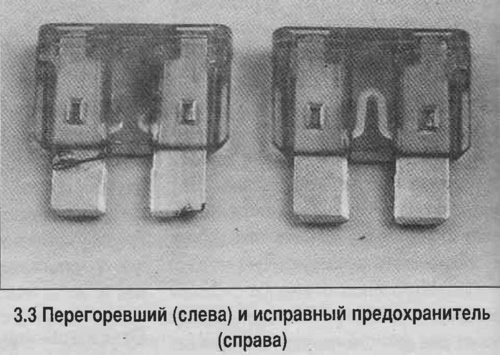
2. To access the fuse, remove the cover of the mounting block. The cover indicates the circuit that this fuse protects. If the circuit fails, check the fuse first. Fuses are installed on knife-type contacts and are removed by hand.
3. A blown fuse is easily detected by its appearance (see photo). You can also check the voltage at the terminals. The fuse is blown if the voltmeter shows voltage. To replace the fuse, remove the defective one and insert a new one by pushing it into the socket.

4. The rated current of the new fuse must exactly match the current of the one being replaced. The rated current is indicated on the fuse. Do not use pieces of wire instead of a fuse.
5. If the new fuse blows immediately, find the cause and fix it. As a rule, burnout is caused by a short circuit of the wires due to chafing or aging of the insulation.
